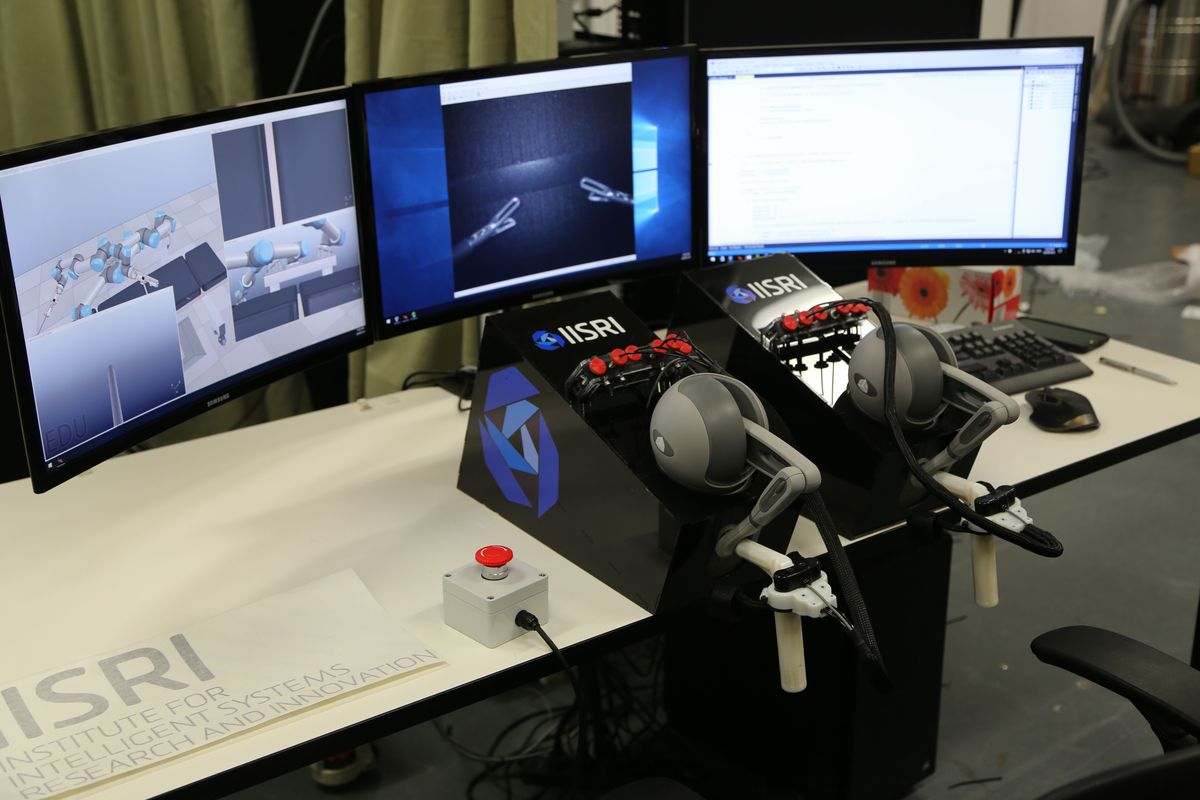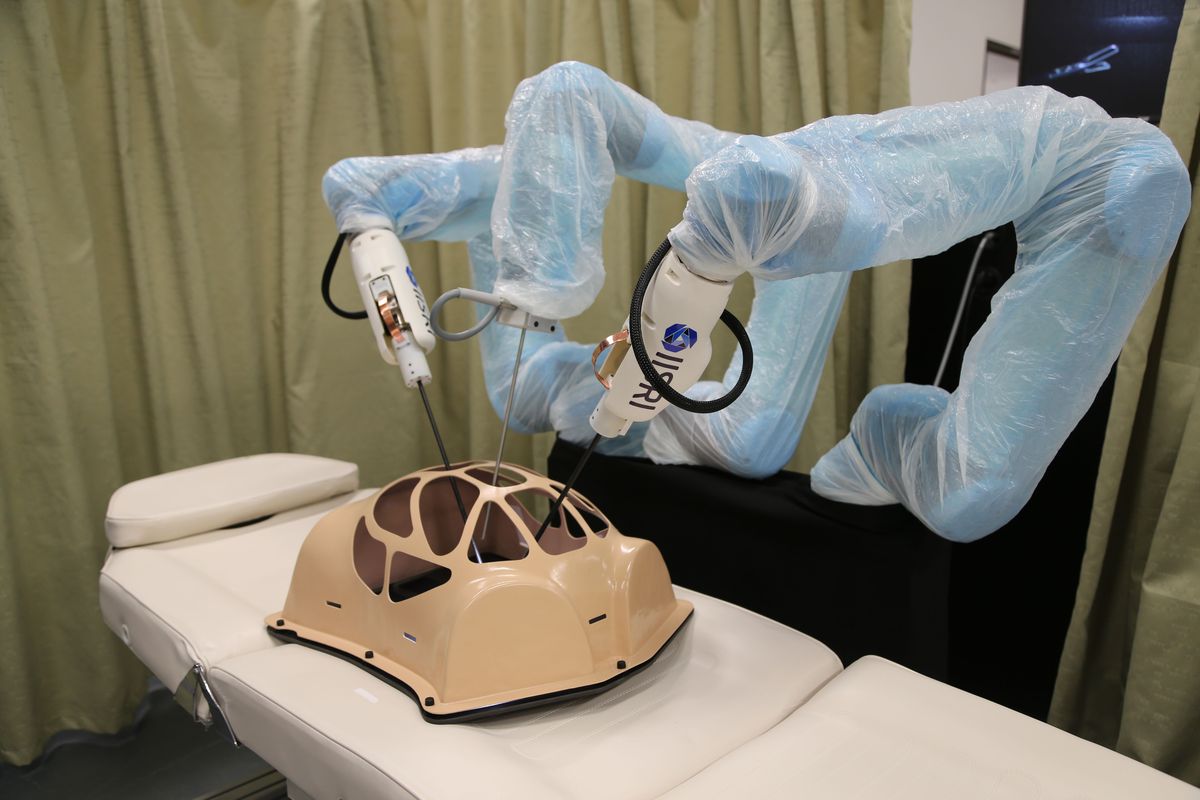When it comes to keyhole surgery, surgeons typically rely on sight as they remotely control the operation. Now, a new robot can give them one extra sense: touch.
Called HeroSurg, the robot was created by a team at Australia’s Deakin University, as well as Harvard University, and is hoped to make operations safer and more accurate. Though it looks horrifying, the robot is anything but. By using haptic feedback to deliver a sense of touch, along with 3D images to the operator, the surgeon can see where the instruments are placed.

Image source: Deakin University.
According to project lead, Mohsen Moradi Dalvand, the robot is a “master and slave” surgical system. On the “slave” side, it’s equipped with multiple robotic arms that include instruments and a laparoscope. On the “master” side, it includes haptic-enabled handles for surgeons to operate the instruments.
The instruments developed can measure the exact amount of force being wielded by the medical instruments on the body and convey that information to the surgeon through the handles.
“If the surgeon is grasping something using the instruments or if they're cutting the tissue, they can feel the amount of force they are applying to the tissue,” Dalvand said. “When you have the ability to measure or feel the interaction forces, you can touch the instruments and feel how stiff the tissues are, how soft they are, to what extent the tissues are normal or abnormal.”

Image source: Deakin University.
Ultimately, the HeroSurg is intended for use during laparoscopic surgery, and more specifically, for delicate operations where the surgeon may be suturing delicate tissue.
Although HeroSurg is far from being the only robotic surgical system, Davland claims his machine stands out because of its haptic feedback ability, as well as features such as collision avoidance and the ability to automatically adjust to the patient and bed. This way, the surgeon doesn’t need to be concerned if he or she is moving the robot toward a collision inside or outside of the patient’s body.
“We are hoping to just fill a gap here, because when we spoke with surgeons, they all spoke about having haptic feedback, a sense of touch, and the limitations they have with the current systems because they do not feel the actual tissue,” Dalvand said.
Currently, Dalvand and his team are working with surgeons in Australia to get their feedback and improve the system. They’re also looking for a commercial partner to help roll out the technology to hospitals across the globe.
By the looks of it, it seems that one day your surgeon could be operating on you from the other side of the world.
Advertisement
Learn more about Electronic Products Magazine





